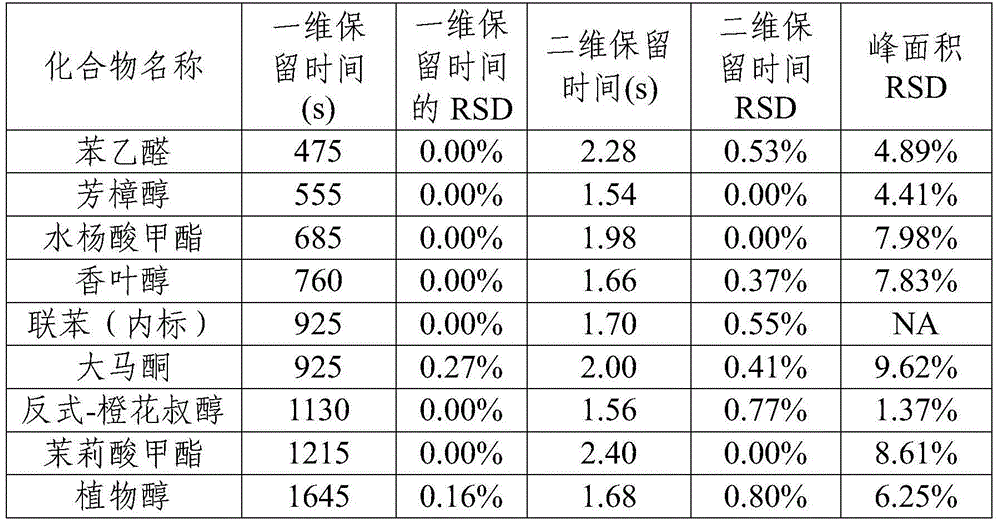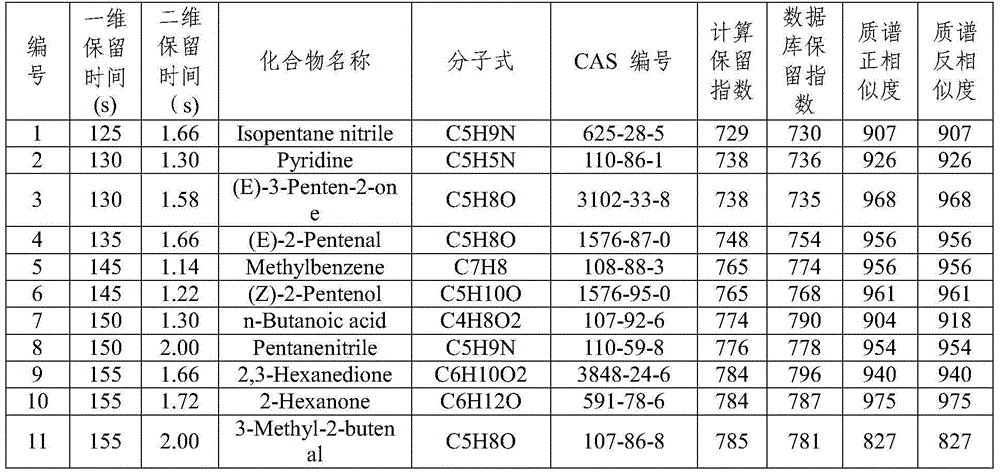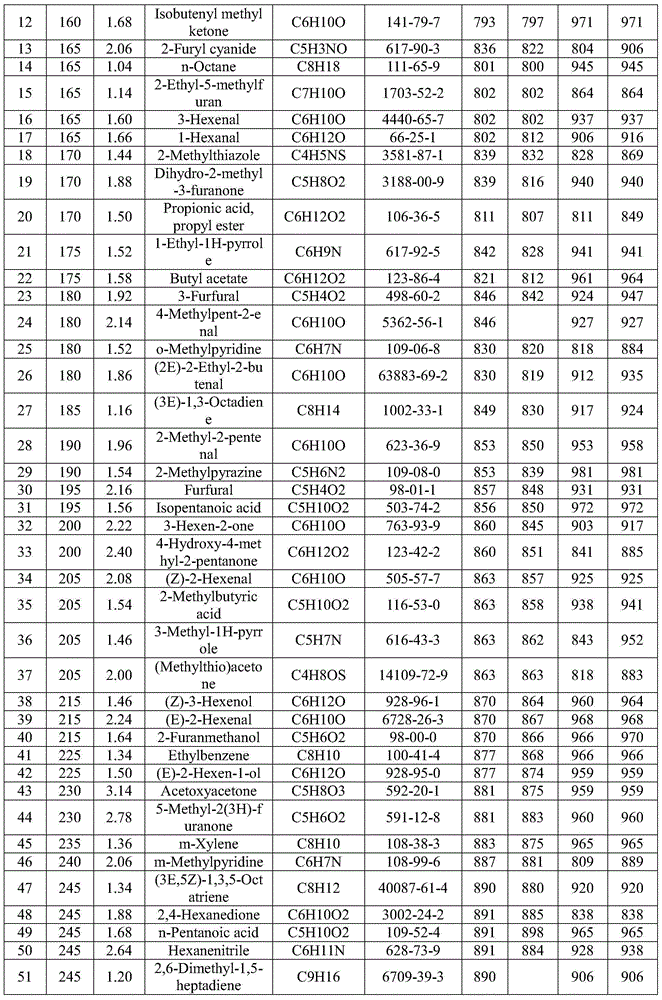Tea volatile aroma component analysis method
A technology of volatile components and aroma components, applied in the field of analytical chemistry, can solve problems such as low resolution and small peak capacity
- Summary
- Abstract
- Description
- Claims
- Application Information
AI Technical Summary
Problems solved by technology
Method used
Image
Examples
Embodiment 1
[0014] Embodiment 1: Method repeatability investigation
[0015] In order to examine the repeatability of the overall method, the experimental steps are as follows
[0016] (1) The volatile components are extracted using a simultaneous distillation extraction method. Put 15g of tea sample powder, 0.1mg of biphenyl (internal standard) and 300ml of water into the first flask, put 60ml of dichloromethane into the second flask, connect the simultaneous distillation extraction device, heat the two flasks separately, and reflux extraction 2h, then collect the sample in the second flask, add 1g of anhydrous sodium sulfate to remove water, then concentrate to 1ml in a rotary evaporator, and then store for analysis. A total of 11 identical samples were extracted.
[0017] (2) The prepared 11 samples were analyzed using comprehensive two-dimensional gas chromatography-time-of-flight mass spectrometry. Comprehensive two-dimensional gas chromatography-time-of-flight mass spectrometry w...
Embodiment 2
[0025] Embodiment 2: Qualitative analysis of volatile aroma components
[0026] In order to characterize the volatile aroma components in tea leaves, the experimental steps are as follows
[0027] (1) The volatile components are extracted using a simultaneous distillation extraction method. Put 15g of tea sample powder, 0.1mg of biphenyl (internal standard) and 300ml of water into the first flask, put 60ml of dichloromethane into the second flask, connect the simultaneous distillation extraction device, heat the two flasks separately, and reflux extraction 2h, then collect the sample in the second flask, add 1g of anhydrous sodium sulfate to remove water, then concentrate to 1ml in a rotary evaporator, and then store for analysis. A total of 1 quality control sample (mixture of green tea, oolong tea and black tea) was extracted.
[0028] (2) The prepared samples were analyzed using comprehensive two-dimensional gas chromatography-time-of-flight mass spectrometry. Comprehens...
Embodiment 3
[0047] In order to find the aroma components that are different among green tea, oolong tea and black tea, the experimental steps are as follows
[0048] (1) The volatile components are extracted using a simultaneous distillation extraction method. Put 15g of tea sample powder, 0.1mg of biphenyl (internal standard) and 300ml of water into the first flask, put 60ml of dichloromethane into the second flask, connect the simultaneous distillation extraction device, heat the two flasks separately, and reflux extraction 2h, then collect the sample in the second flask, add 1g of anhydrous sodium sulfate to remove water, then concentrate to 1ml in a rotary evaporator, and then store for analysis. A total of 12 green tea, 12 oolong tea and 9 black tea samples were extracted.
[0049] (2) All 33 samples prepared were analyzed using comprehensive two-dimensional gas chromatography-time-of-flight mass spectrometry. Comprehensive two-dimensional gas chromatography-time-of-flight mass spe...
PUM
 Login to View More
Login to View More Abstract
Description
Claims
Application Information
 Login to View More
Login to View More - R&D
- Intellectual Property
- Life Sciences
- Materials
- Tech Scout
- Unparalleled Data Quality
- Higher Quality Content
- 60% Fewer Hallucinations
Browse by: Latest US Patents, China's latest patents, Technical Efficacy Thesaurus, Application Domain, Technology Topic, Popular Technical Reports.
© 2025 PatSnap. All rights reserved.Legal|Privacy policy|Modern Slavery Act Transparency Statement|Sitemap|About US| Contact US: help@patsnap.com



